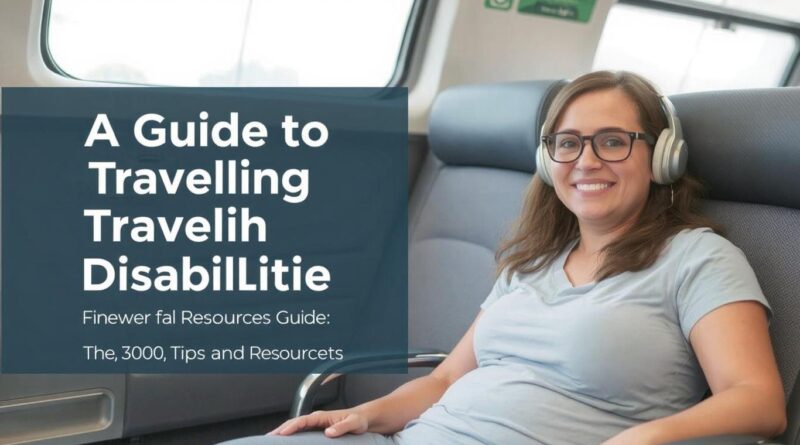A Guide to Traveling with Disabilities: Tips and Resources
Traveling with Disabilities can be an exciting experience, but for individuals with disabilities, it requires additional planning and preparation. Fortunately, many destinations and services are becoming more inclusive, making it easier for everyone to explore the world. Whether you need wheelchair accessibility, assistance services, or medical support, this guide will help ensure a smooth and enjoyable journey. When traveling with Disabilities, consider using reliable transportation services like Taxi With Baby Melbourne, which cater to specific accessibility needs.
1. Planning Your Trip
Proper planning is key to a stress-free journey. Research destinations, accommodations, and transportation options that offer accessibility features. Websites like AccessibleGO and WheelchairTravel provide valuable resources on accessible hotels and attractions.
2. Choosing Accessible Destinations
Some cities and countries are more disability-friendly than others. Top accessible destinations include:
-
Barcelona, Spain – Offers wheelchair-friendly public transport and accessible beaches.
-
Sydney, Australia – Features accessible attractions like the Sydney Opera House and Bondi Beach.
-
London, UK – Has an extensive public transport system with step-free access at many stations.
-
Orlando, USA – Theme parks like Disney World and Universal Studios provide excellent disability services.
3. Booking Flights and Accommodations
-
When booking flights, contact the airline in advance to arrange special assistance, such as wheelchair access or priority boarding.
-
Choose hotels that offer wheelchair-accessible rooms, roll-in showers, and other necessary amenities.
-
Consider using Airbnb, as many hosts now provide accessibility details in their listings.
4. Packing Essentials
-
Bring all necessary medications and medical documents.
-
Carry extra mobility aids, such as spare wheelchair batteries or crutches.
-
Pack a medical alert card with emergency contact information.
5. Navigating Airports and Public Transport
-
Many airports offer wheelchair assistance and accessible lounges.
-
In cities, research transport options in advance. Some services, like Uber WAV (Wheelchair Accessible Vehicles), provide accessible ride-sharing options.
-
Trains and buses in major cities are increasingly equipped with ramps and designated seating for passengers with disabilities.
6. Accessible Attractions and Activities
-
Many museums, national parks, and tourist sites offer accessible pathways and services.
-
Cruise lines like Royal Caribbean and Norwegian Cruise Line provide wheelchair-accessible cabins and amenities.
-
Adventure activities, such as adaptive skiing and scuba diving, are available in select locations for travelers with disabilities.
7. Traveling with Disabilities
If you rely on a service animal, ensure that the airline and accommodations allow pets. Many countries have specific entry requirements, so check quarantine regulations and necessary vaccinations in advance.
8. Disability Travel Insurance
Investing in comprehensive travel insurance is essential. Look for plans that cover medical emergencies, mobility aid replacements, and trip cancellations due to health concerns.
9. Using Travel Apps and Resources
Technology can make travel easier. Some helpful apps include:
-
Be My Eyes – Connects visually impaired travelers with volunteers for assistance.
-
Wheelmap – Helps locate wheelchair-accessible places worldwide.
-
Google Maps – Offers accessibility information for public transportation.
1. Planning Your Trip
Proper planning is key to a stress-free journey. Research destinations, accommodations, and transportation options that offer accessibility features. Websites like AccessibleGO and WheelchairTravel provide valuable resources on accessible hotels and attractions.
2. Choosing Accessible Destinations
Some cities and countries are more disability-friendly than others. Top accessible destinations include:
-
Barcelona, Spain – Offers wheelchair-friendly public transport and accessible beaches.
-
Sydney, Australia – Features accessible attractions like the Sydney Opera House and Bondi Beach.
-
London, UK – Has an extensive public transport system with step-free access at many stations.
-
Orlando, USA – Theme parks like Disney World and Universal Studios provide excellent disability services.
3. Booking Flights and Accommodations
-
When booking flights, contact the airline in advance to arrange special assistance, such as wheelchair access or priority boarding.
-
Choose hotels that offer wheelchair-accessible rooms, roll-in showers, and other necessary amenities.
-
Consider using Airbnb, as many hosts now provide accessibility details in their listings.
4. Packing Essentials
-
Bring all necessary medications and medical documents.
-
Carry extra mobility aids, such as spare wheelchair batteries or crutches.
-
Pack a medical alert card with emergency contact information.
5. Navigating Airports and Public Transport
-
Many airports offer wheelchair assistance and accessible lounges.
-
In cities, research transport options in advance. Some services, like Uber WAV (Wheelchair Accessible Vehicles), provide accessible ride-sharing options.
-
Trains and buses in major cities are increasingly equipped with ramps and designated seating for passengers with disabilities.
6. Accessible Attractions and Activities
-
Many museums, national parks, and tourist sites offer accessible pathways and services.
-
Cruise lines like Royal Caribbean and Norwegian Cruise Line provide wheelchair-accessible cabins and amenities.
-
Adventure activities, such as adaptive skiing and scuba diving, are available in select locations for travelers with disabilities.
7. Traveling with Disabilities
If you rely on a service animal, ensure that the airline and accommodations allow pets. Many countries have specific entry requirements, so check quarantine regulations and necessary vaccinations in advance.
8. Disability Travel Insurance
Investing in comprehensive travel insurance is essential. Look for plans that cover medical emergencies, mobility aid replacements, and trip cancellations due to health concerns.
9. Using Travel Apps and Resources
Technology can make travel easier. Some helpful apps include:
-
Be My Eyes – Connects visually impaired travelers with volunteers for assistance.
-
Wheelmap – Helps locate wheelchair-accessible places worldwide.
-
Google Maps – Offers accessibility information for public transportation.
-
10. Connecting with Disability Travel Communities
Joining online forums and social media groups can provide valuable insights from other travelers with disabilities. Websites like Disabled Travelers and Curb Free with Cory Lee offer firsthand travel experiences and advice.
Conclusion
Traveling with disabilities may require extra planning, but it doesn’t have to be a barrier to exploring the world. With the right resources, accessible destinations, and thoughtful preparation, you can enjoy a fulfilling and hassle-free travel experience. Embrace the adventure and make lasting memories, knowing that more places are becoming inclusive for all travelers.

